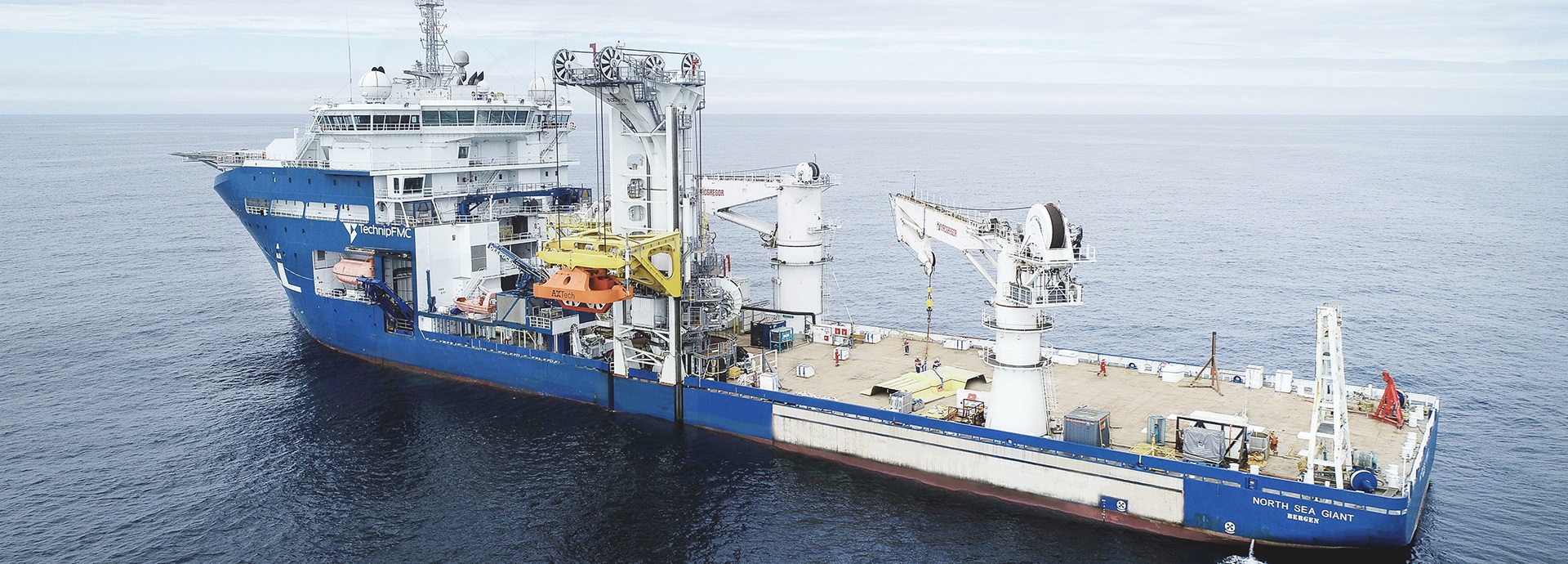

Hybrid solution upgrade brings significant fuel savings for offshore vessel
The Norwegian company North Sea Shipping (NSS) installed a Wärtsilä HY upgrade solution on the North Sea Giant, an advanced subsea construction vessel. “To fully utilise the hybrid solution in the vessel operations, it was necessary to distribute the energy between the redundancy cells,” says Henning Revne, Technical Manager at North Sea Shipping.
“Firstly, hybrid solutions are becoming more common, which is part of the demand for greener solutions from our customers. Secondly, we saw an opportunity to save fuel in dynamic positioning (DP) operation, since we could use battery mode and only
one engine for electricity production. Also, the vessel would become greener and more competitive on the market,” says Mr. Revne.
Running on optimal load
Redundancy is a strict requirement for vessels with DP-capability. For DP3 class vessels, such as the North Sea Giant, having one running engine in each redundancy cell with under 50 per cent load consumes substantially more fuel compared to an engine
running at optimal load.
Wärtsilä delivered a full upgrade scope including new LLC transformers, DC-hubs, power electronics and batteries. A new shore connection complying with modern standards was also installed.
In
short, three energy storage systems, coupled to independent AC grid sections, are now connected by a DC link to create a common DC power source for each AC grid section. This allows the North Sea Giant to run only one engine on optimal load rather
than three engines on low load. The power produced can then be distributed by the single engine through the DC grid.
“The engineers from Wärtsilä did a good job and delivered on their promises so that we could keep
to the very tight schedule at the shipyard.”
Fuel savings and reduced emissions
According to Mr Revne, the North Sea Giant already uses fewer engines in all types of mode.
“We now manage 80 per cent of the DP-operations with only one engine. The batteries have improved the redundancy of the operations since
battery power is always available. So, the power supply is now safer and more reliable. Moreover, on top of this, we have already seen quite significant fuel savings and emission reductions.”
NSS already had high expectations of the
system, which has still only been in use for only a short period of time.
“We have measured fuel savings of up to 40% in DP-mode. For more reliable figures we need to measure the consumption over a longer time period. It looks
promising since our aim was an overall annual fuel reduction of 30%. The reduced running hours will also lead to lower maintenance costs. This was a conversion case, but for a newbuild you could even reduce the number of engines,” concludes
Mr Revne on his recommendation for other owners to go for a hybrid solution.
Challenge
- Reducing fuel consumption, emissions and running hours while still obtaining the redundancy of the vessel
Solution
- Installation of a Wärtsilä HY upgrade
Benefit
- Clear fuel savings both in DP-mode and overall
- Increased redundancy for the vessel
- Reduced emissions
- Safer and more reliable power supply



